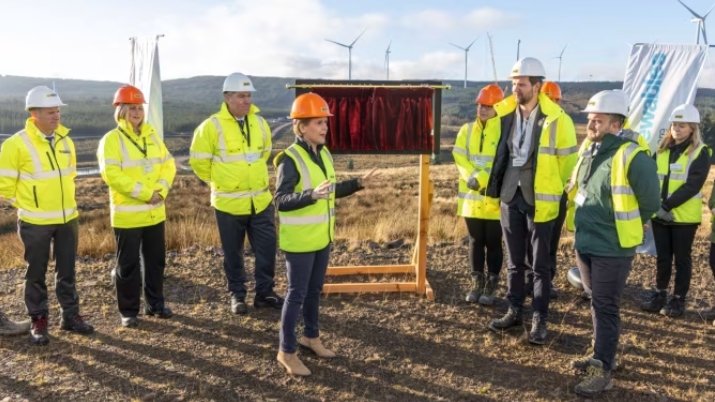Scotland is hitting reset on its climate strategy after repeatedly missing key emissions targets. The Scottish Government has officially scrapped its legally binding 2030 climate goal, instead unveiling a new framework based on five-year carbon budgets aimed at reaching net zero by 2045.
The move has sparked a heated mix of praise, panic, and political finger-pointing.
Scotland, once seen as a global climate frontrunner, now finds itself facing tough questions—about credibility, capacity, and whether it’s still on course to meet its long-term environmental promises.
Abandoning the 2030 Pledge
The 2030 commitment was ambitious: cut greenhouse gas emissions by 75% compared to 1990 levels. But it’s not happening.
After missing eight out of the last twelve annual climate targets, Scottish ministers have conceded that the interim goal isn’t realistic. Instead of sticking to annual targets, Scotland will now operate with rolling five-year carbon budgets.
One short paragraph.
Critics say it’s a walk-back. Ministers say it’s an honest adjustment.

What Are These Carbon Budgets?
Here’s what’s new: Instead of yearly targets, Scotland will now measure progress over longer windows. It’s more flexible, but some fear it invites delay.
The new plan includes:
-
69% emissions reduction by 2035, compared to 1990
-
Still aiming for net zero by 2045, five years ahead of the UK as a whole
-
Dropping annual targets, which were often missed without consequence
A government spokesperson said the new system allows for “greater accountability through long-term planning,” adding that it reflects the realities of budget constraints, technology gaps, and the UK’s wider energy framework.
Why Did the Original Plan Fail?
That’s a long story—and not a pretty one.
First, Scotland’s climate policies didn’t keep up with its targets. While the country made early progress in decarbonising electricity, sectors like transport, heating, and agriculture have lagged.
Second, public investment didn’t match the scale of the promises. Austerity-era cuts and capital budget reductions from Westminster were cited as major barriers.
And finally, there was political caution. Big changes to how people travel, heat their homes, or use their land? Those are vote-losers—especially when costs hit working households first.
One sentence here.
Climate watchdogs like the UK Climate Change Committee (CCC) have consistently flagged the gap between Scotland’s rhetoric and results.
The CCC’s Not Impressed
The CCC’s 2025 assessment was blunt: Scotland is no longer a climate leader.
They warned that unless Scotland gets serious—right now—even the 2045 net-zero goal could slip out of reach. Their recommendations weren’t subtle either:
-
Cut emissions 57% by 2030–35, then 94% by 2041–45
-
Electrify 60% of cars and vans within 10 years
-
Retrofit homes to low-carbon heat systems (40% by 2035)
-
Boost peatland restoration, tree planting, and land carbon use
Here’s a table based on the CCC’s recommendations vs Scotland’s current trajectory:
| Sector | CCC Target 2035 | Current Progress | Urgency Level |
|---|---|---|---|
| Transport (EVs) | 60% fleet EV | ~11% | Very High |
| Homes (heat pumps) | 40% installed | ~6% | High |
| Land Use | 50,000 ha/year afforestation | ~9,400 ha/year | Very High |
| Peatland restoration | 250,000 ha | ~50,000 ha | Medium |
Environmental Groups Are Fuming
Environmental organisations haven’t held back. Friends of the Earth branded the move a “colossal climate failure.” Oxfam Scotland called it a “betrayal of future generations.”
The language has been sharp. And the concern is that diluting targets now sends a dangerous message—one that other governments might follow.
That said, some experts argue the new plan is simply more realistic. It trades idealism for structure.
One very short paragraph here.
Still, realism doesn’t cut emissions.
Where the Money Comes In
The new plan is going to need a lot of funding. The CCC estimates that hitting the 2045 goal will require about £750 million per year—or roughly £15 billion by 2045.
That’s just the public share. Add in private investment, and the total climbs even higher.
Yet with capital budgets under pressure—and tax rises off the table—there are fears that Scotland could be locked in a policy trap: big ideas, but no cash.
One-line paragraph.
And that’s before you even count the political cost.
The Political Fallout
The SNP-Green coalition, already bruised by internal rows and leadership changes, is under pressure from both ends. Climate activists want bolder action now. Rural voters want cost protections and fewer mandates.
Scottish Labour has accused the government of “climate cowardice.” Meanwhile, UK ministers have said very little, though the Westminster cuts to capital spending haven’t gone unnoticed in Holyrood.
What’s clear is this: the new plan has set a new standard to be judged against.
Whether or not it can succeed will depend on how fast policy moves from speeches to street level—from declarations to delivery.


















